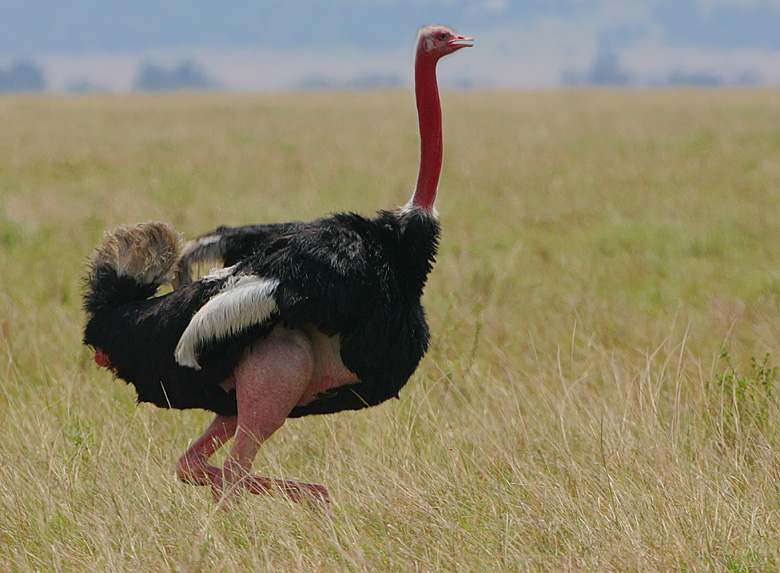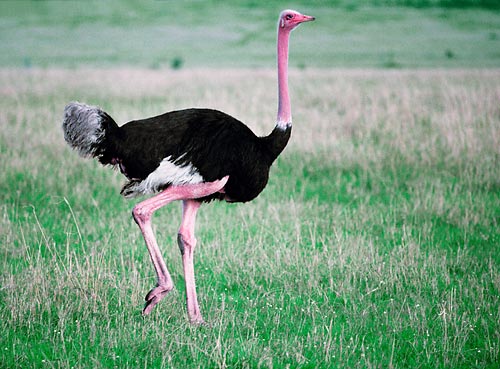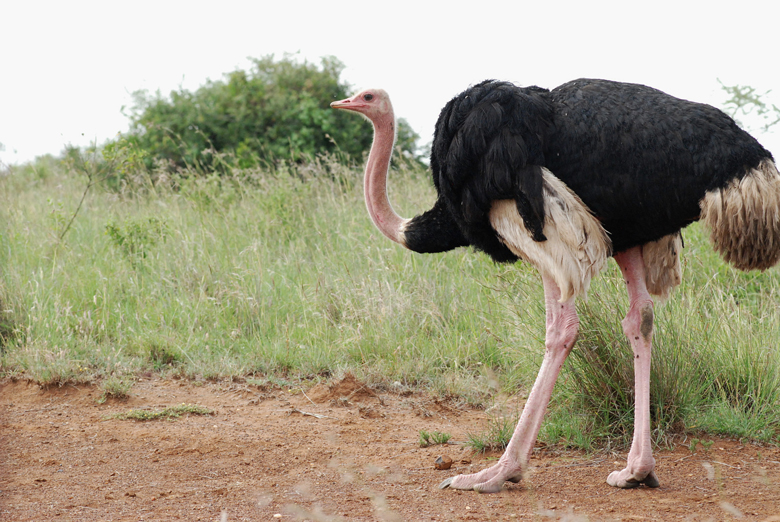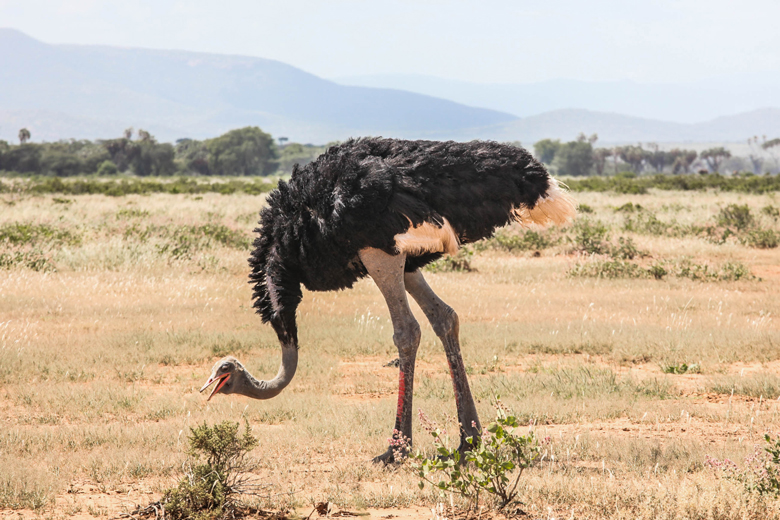



n o j
Noj (lat. Struthio camelus) je velika afrička ptica neletačica iz reda trkačica. To je jedina savremena vrsta iz istoimene porodice (Struthionidae) i roda (Struthio). Nojevi su prepoznatljivi po svojim dugačkim vratovima i nogama i sposobnosti da trče brzinom od oko 65 kilometara na čas — najbrže od svih ptica. To su danas najveće ptice na svetu; mužjaci dostižu visinu od 3 metara i težinu do 155 kilograma, dok su ženke za oko trećinu manje.

strucc
A strucc (Struthio camelus) a madarak osztályának struccalakúak (Struthioniformes) rendjébe és a struccfélék (Struthionidae) családjába tartozó Struthio nem egyetlen élő faja, egyben a legnagyobb testű ma is élő madárfaj. A strucc a legnagyobb testű ma is élő madárfaj. A kakas 210-275 centiméter magasra nő meg; teste nagyjából 2 m hosszú, a tömege 100-156 kilogramm. A kisebb tyúk 175-190 centiméteres magasságú és 90-110 kilogramm tömegű.
A nyílt, belátható, füves szavannák, félsivatagok lakója. A száraz környezethez alkalmazkodva a szomjazást napokig bírja.
A homokban fürödve tisztálkodik. Jól fut, eközben négyméteres lépteivel a 70 km/h sebességet is eléri.
Afrikai őshazáján kívül betelepítették Ausztráliába is, ahol a sivatagos vidékeken jól meghonosodott. Telepeken más kontinenseken is tenyésztik; néhány ilyen telep már Magyarországon is van.
Common ostrich
The ostrich or common ostrich (Struthio camelus) is either one or two species of large flightless birds native to Africa, the only living member(s) of the genus Struthio, which is in the ratite family. In 2014, the Somali ostrich (Struthio molybdophanes) was recognized as a distinct species. The common ostrich shares the order Struthioniformes with the kiwis, emus, rheas, and cassowaries. However, phylogenetic studies have shown that it is the sister group to all other members of Palaeognathae and thus the flighted tinamous are the sister group to the extinct moa. It is distinctive in its appearance, with a long neck and legs, and can run at up to about 70 km/h (19 m/s; 43 mph), the fastest land speed of any bird. The common ostrich is the largest living species of bird and lays the largest eggs of any living bird (extinct elephant birds of Madagascar and the giant moa of New Zealand laid larger eggs).
Strauß
Der Strauß ist ein Laufvogel. Er lebt heute nur noch in Afrika südlich der Sahara. Früher lebte er auch in Westasien. Dort wurde er jedoch ausgerottet. Die Menschen mögen seine Federn, sein Fleisch und sein Leder. Die Männchen heißen Hähne, die Weibchen Hennen und die Jungtiere Küken. Die Straußenmännchen werden größer als die größten Menschen und fast doppelt so schwer. Die Weibchen sind etwas kleiner und leichter. Der Strauß hat einen sehr langen Hals und einen kleinen Kopf, beides fast ohne Federn. Der Strauß kann eine halbe Stunde lang mit 50 Kilometern pro Stunde laufen. So schnell dürfen bei uns die Autos in den Städten fahren. Während kürzerer Zeit schafft er sogar 70 Stundenkilometer. Fliegen kann der Strauß nicht. Er braucht seine Flügel, um beim Laufen das Gleichgewicht zu halten.

